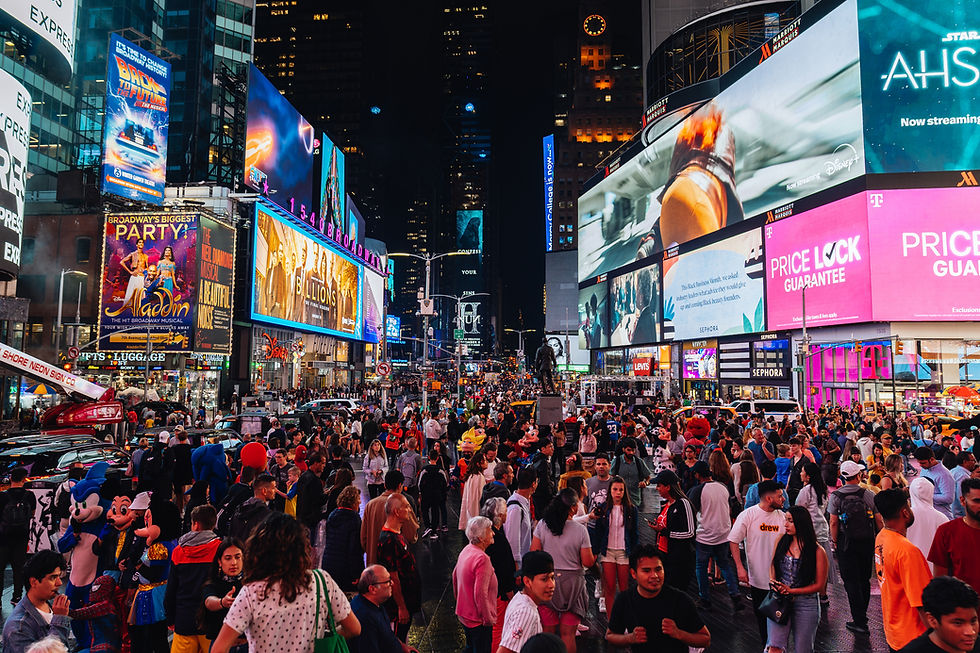Cutting-Edge Solutions for Monitoring Movement in Physical Spaces
- salomé furhmann
- 13 août
- 4 min de lecture
Dernière mise à jour : 12 sept.
In today's fast-paced world, understanding how people move within physical spaces is more important than ever. Whether it's for enhancing security, improving customer experiences, or optimizing space usage, monitoring movement can provide valuable insights. With advancements in technology, we now have access to innovative solutions that make this task easier and more effective.
In this blog post, we will explore some of the most cutting-edge solutions for monitoring movement in physical spaces. We will discuss various technologies, their applications, and how they can benefit different industries.
The Importance of Movement Monitoring
Monitoring movement in physical spaces is crucial for several reasons.
Security: Keeping an eye on who enters and exits a building can help prevent unauthorized access.
Customer Experience: Retailers can track customer movements to enhance shopping experiences.
Space Optimization: Businesses can analyze foot traffic to make better use of their spaces.
By understanding movement patterns, organizations can make informed decisions that lead to improved safety, efficiency, and satisfaction.
Technologies for Movement Monitoring
Several technologies are available for monitoring movement in physical spaces. Here are some of the most effective ones:
1. Video Surveillance Systems
Video surveillance systems have been around for years, but they have evolved significantly.
High-definition cameras: Modern cameras provide clear images, even in low light.
AI integration: Artificial intelligence can analyze video feeds in real-time, detecting unusual movements or behaviors.
These systems are widely used in retail, offices, and public spaces to enhance security and monitor activities.
2. RFID Technology
Radio Frequency Identification (RFID) technology is another powerful tool for movement monitoring.
Tracking assets: RFID tags can be attached to items, allowing businesses to track their movement within a space.
Inventory management: Retailers can use RFID to monitor stock levels and reduce theft.
This technology is particularly useful in warehouses and retail environments.
3. IoT Sensors
The Internet of Things (IoT) has opened up new possibilities for movement monitoring.
Smart sensors: These devices can detect motion, temperature, and even humidity.
Data collection: IoT sensors can gather data over time, providing insights into movement patterns.
Businesses can use this information to optimize their operations and improve customer experiences.
4. Mobile Tracking
With the rise of smartphones, mobile tracking has become a popular method for monitoring movement.
Location-based services: Apps can track user movements and provide personalized experiences.
Analytics: Businesses can analyze data from mobile tracking to understand customer behavior.
This technology is especially useful in retail and hospitality industries.
Applications of Movement Monitoring
Movement monitoring has a wide range of applications across various industries. Here are some examples:
Retail
In retail, understanding customer movement can lead to better store layouts and improved sales.
Heat maps: Retailers can create heat maps to visualize foot traffic and identify popular areas.
Product placement: By analyzing movement patterns, businesses can place products in high-traffic areas to increase visibility.
These strategies can enhance the shopping experience and boost sales.
Healthcare
In healthcare settings, monitoring movement can improve patient care and safety.
Patient tracking: Hospitals can use movement monitoring to track patients and ensure they receive timely care.
Staff efficiency: Monitoring staff movements can help identify bottlenecks and improve workflow.
This technology can lead to better patient outcomes and more efficient operations.
Smart Buildings
Smart buildings utilize movement monitoring to enhance energy efficiency and security.
Automated systems: Sensors can detect occupancy and adjust lighting and heating accordingly.
Security measures: Monitoring movement can help identify unauthorized access and enhance safety.
These solutions contribute to more sustainable and secure environments.
Challenges in Movement Monitoring
While there are many benefits to movement monitoring, there are also challenges to consider.
Privacy concerns: Monitoring movement can raise privacy issues, especially in public spaces.
Data management: Collecting and analyzing large amounts of data can be overwhelming for organizations.
Integration: Ensuring that different technologies work together seamlessly can be a challenge.
Addressing these challenges is essential for successful implementation.
Future Trends in Movement Monitoring
As technology continues to advance, we can expect to see new trends in movement monitoring.
Enhanced AI capabilities: AI will play a larger role in analyzing movement data and providing actionable insights.
Wearable technology: Wearables will become more common for tracking movement in various settings.
Increased focus on privacy: Organizations will need to prioritize privacy and data protection as they implement monitoring solutions.
Staying ahead of these trends will be crucial for businesses looking to leverage movement monitoring effectively.
Real-World Examples
To illustrate the impact of movement monitoring, let's look at a few real-world examples.
Example 1: Retail Store Optimization
A major retail chain implemented video surveillance and IoT sensors to monitor customer movement.
Results: They discovered that customers spent more time in certain areas of the store.
Action: The retailer adjusted product placement and store layout based on this data.
As a result, they saw a significant increase in sales and customer satisfaction.
Example 2: Hospital Efficiency
A hospital used RFID technology to track the movement of medical equipment.
Results: They reduced the time staff spent searching for equipment.
Action: The hospital implemented a more efficient inventory management system.
This led to improved patient care and reduced operational costs.
The Path Forward
As we move into a more connected world, the importance of monitoring movement in physical spaces will only grow.
Organizations that embrace cutting-edge solutions will be better equipped to enhance security, improve customer experiences, and optimize their operations.
By understanding the technologies available and their applications, businesses can make informed decisions that lead to success.
In a world where every movement counts, staying ahead of the curve is essential.

As we look to the future, the possibilities for movement monitoring are endless. Embracing these technologies will not only benefit businesses but also create safer and more efficient environments for everyone.
By investing in the right solutions, organizations can unlock the full potential of movement monitoring and pave the way for a brighter future.





Commentaires